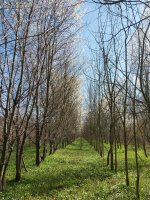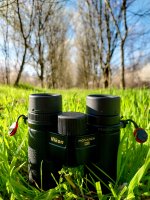-
Welcome to BirdForum, the internet's largest birding community with thousands of members from all over the world. The forums are dedicated to wild birds, birding, binoculars and equipment and all that goes with it.
Please register for an account to take part in the discussions in the forum, post your pictures in the gallery and more.
You are using an out of date browser. It may not display this or other websites correctly.
You should upgrade or use an alternative browser.
You should upgrade or use an alternative browser.
Field Review of my (four) binoculars and my gear setup (2 Viewers)
- Thread starter dorubird
- Start date
More options
Who Replied?
Well yes, its eyesight is far better than yours or mine…The photo was taken from a tripod. I took many frames, but I chose this frame because I like how the bird seems to be protecting its nest and looks aggressive straight into my lens. The feeling is extraordinary considering that it was about 100m to the bird.
dorubird
The unskilled mechanic blames his tools!

Thank you all for the nice words!
Yes, you do not need to worry because you're right! I messed up the latin name of the two little birds... Thanks for the attention, but I can't edit anymore!I feel like such a churl for pointing this out, but it's the goldcrest that is Regulus regulus and the wren Troglodytes troglodytes...
but thanks for sharing your pics - TBM should take a leaf from your book! ...
dorubird
The unskilled mechanic blames his tools!

I will introduce my new Panasonic Leica DG Elmarit 200mm f/2.8 POWER O.I.S.
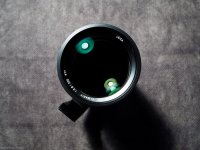
The first strong impression is how heavy it is! I expected that, with its small volume, it would weigh less. But the metal construction with the many lenses and the short length make this lens feel very dense with high quality impression. I use a strap attached to its tripod foot mount. The tripod foot mount is a little small and a little sharp on the edges, which is not very comfortable in the hand. But with time I'm sure I'll get used to it.
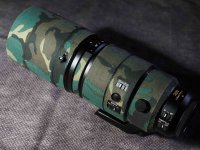
I applied a military khaki/camouflage textile cover over the telephoto lens. The cover can be peeled off without leaving traces and can be reused. I cut out the holes for the lens buttons with the cutter and scissors. It's very good as protection against scratches and camouflage, but also keep a little warm during winter observations, to slow down the condensation!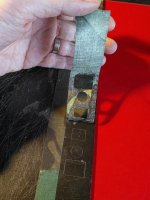
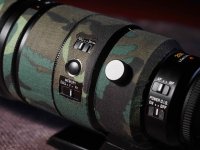
It is a long focal lens, very specialized, being 400mm equivalent to full frame. I opted for this Panasonic Leica 200mm f/2.8 and not Olympus 300mm PRO f/4 primarily because it has a smaller focal ratio. This f2.8 is extremely advantageous in poor light conditions to keep an exposure with as short times as possible, to freeze the subjects. In addition, for my personal taste, this 200mm focal length (400mmFF) is a little more versatile on the m4/3 format than the 300mm (600mmFF), because it gives me a little more freedom in the composition. However, the Zuiko 40-150 PRO f2/8, being a zoom, gives me greater freedom and speed in composition than this 200mm 2.8, which is very specialized. These two lenses are complementary to each other!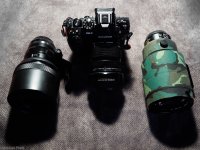
The optical scheme has 15 lenses in 13 groups with all kinds of exotic lenses (Aspherical, UltraED) The anti-reflective layer is of the best quality being almost invisible from certain angles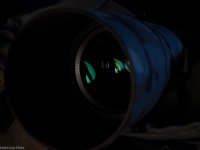
The optical performance of this 200mm telephoto lens is impeccable. The colors are superb, very rich in shades and without chromatic aberrations. The color saturation is similar to reality.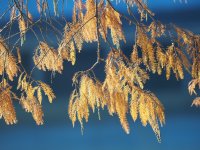
The resolution on the center is from another world even at f/2.8. The microcontrast (acutance) is so great that I practically never close the diaphragm, leaving it at f/2.8 all the time. At f/4, you can see a small improvement in resolution, but not so much that I miss it (especially in the center). The photos in this review are not processed, being straight from the camera at f2.8 and hard cropped to see the fantastic clarity of this lens.
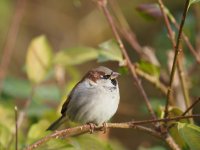
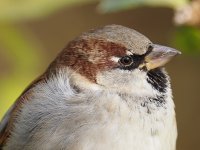
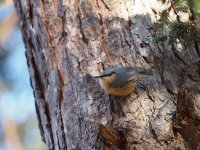
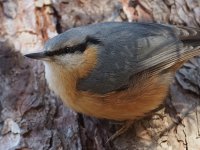
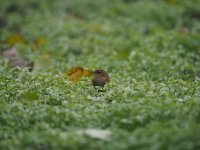
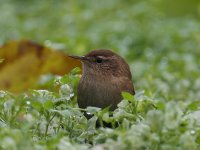
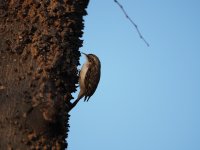
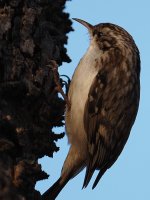
The bokeh is very pleasant and silky even in difficult conditions. The depth of field is reduced, but still with a practical depth of field on the m4/3 format. This is because I often have to be very careful where the sharpness is, as it is generally only a matter of a few millimeter of sharpness at f/2.8 (it is equivalent to the f/5.6 depth of field on the FF). See how the beak is clear but the eyes are not: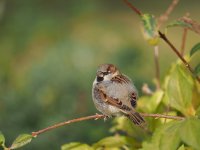
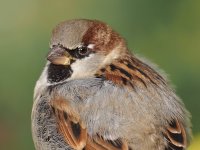
The focus is extremely accurate and fast on the Olympus OM D 1markIII. It is as good as the Olympus 40-150PRO f/2.8. I mainly use CAF, but if the subject is static I also use SAF. It has a focus distance preset button, very practical on the field..
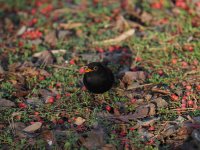
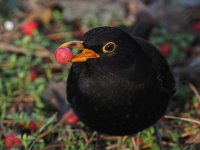
This specialized objective requires to develop a special technique for using and approaching animals. But after you get over the learning curve, it rewards you with fantastic images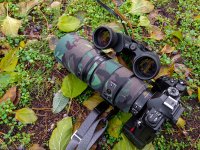

The first strong impression is how heavy it is! I expected that, with its small volume, it would weigh less. But the metal construction with the many lenses and the short length make this lens feel very dense with high quality impression. I use a strap attached to its tripod foot mount. The tripod foot mount is a little small and a little sharp on the edges, which is not very comfortable in the hand. But with time I'm sure I'll get used to it.

I applied a military khaki/camouflage textile cover over the telephoto lens. The cover can be peeled off without leaving traces and can be reused. I cut out the holes for the lens buttons with the cutter and scissors. It's very good as protection against scratches and camouflage, but also keep a little warm during winter observations, to slow down the condensation!


It is a long focal lens, very specialized, being 400mm equivalent to full frame. I opted for this Panasonic Leica 200mm f/2.8 and not Olympus 300mm PRO f/4 primarily because it has a smaller focal ratio. This f2.8 is extremely advantageous in poor light conditions to keep an exposure with as short times as possible, to freeze the subjects. In addition, for my personal taste, this 200mm focal length (400mmFF) is a little more versatile on the m4/3 format than the 300mm (600mmFF), because it gives me a little more freedom in the composition. However, the Zuiko 40-150 PRO f2/8, being a zoom, gives me greater freedom and speed in composition than this 200mm 2.8, which is very specialized. These two lenses are complementary to each other!

The optical scheme has 15 lenses in 13 groups with all kinds of exotic lenses (Aspherical, UltraED) The anti-reflective layer is of the best quality being almost invisible from certain angles

The optical performance of this 200mm telephoto lens is impeccable. The colors are superb, very rich in shades and without chromatic aberrations. The color saturation is similar to reality.

The resolution on the center is from another world even at f/2.8. The microcontrast (acutance) is so great that I practically never close the diaphragm, leaving it at f/2.8 all the time. At f/4, you can see a small improvement in resolution, but not so much that I miss it (especially in the center). The photos in this review are not processed, being straight from the camera at f2.8 and hard cropped to see the fantastic clarity of this lens.








The bokeh is very pleasant and silky even in difficult conditions. The depth of field is reduced, but still with a practical depth of field on the m4/3 format. This is because I often have to be very careful where the sharpness is, as it is generally only a matter of a few millimeter of sharpness at f/2.8 (it is equivalent to the f/5.6 depth of field on the FF). See how the beak is clear but the eyes are not:


The focus is extremely accurate and fast on the Olympus OM D 1markIII. It is as good as the Olympus 40-150PRO f/2.8. I mainly use CAF, but if the subject is static I also use SAF. It has a focus distance preset button, very practical on the field..


This specialized objective requires to develop a special technique for using and approaching animals. But after you get over the learning curve, it rewards you with fantastic images

Last edited:
Jeffbennett12
Well-known member
Those images are stunning. Thanks for sharing.
tenex
reality-based
No foot is really comfortable to handhold, but there's usually an optimal angle that puts it mostly out of the way. I didn't know Leica M4/3 lenses fit Olympus. Lovely photos. I like nuthatches, especially the Red-breasted which is a winter bird for us, quite similar to yours.The tripod foot mount is a little small and a little sharp on the edges, which is not very comfortable in the hand. But with time I'm sure I'll get used to it.
dorubird
The unskilled mechanic blames his tools!

It has lighting fast focus and keeps the birds in flight well. I have some pictures of seagulls and pigeons in flight and I can say that the success rate is surprisingly good. Of course, if the situation is more complicated with a very busy background, then may still be some misses, but not enough to worry me@dorubird - How well does that 200 f2.8 and your Olympus body capture birds in flight?
dorubird
The unskilled mechanic blames his tools!

Yes, no foot is relly comfortable to handhold, but when I walk in the field, I would have liked to handhold my gear by the tripod foot. So, Leica Elmarit 200mm tripod foot doesn't allow me to grasp it very well, being too short, and in addition, the edges are too sharp. Zuiko 40-150 PRO tripod foot it is more comfortable with rotund edges and larger.No foot is really comfortable to handhold, but there's usually an optimal angle that puts it mostly out of the way. I didn't know Leica M4/3 lenses fit Olympus. Lovely photos. I like nuthatches, especially the Red-breasted which is a winter bird for us, quite similar to yours.
tenex
reality-based
Perhaps you could put some rubber tubing or neoprene on it?So, Leica Elmarit 200mm tripod foot doesn't allow me to grasp it very well, being too short, and in addition, the edges are too sharp.
dorubird
The unskilled mechanic blames his tools!

Last edited:
dorubird
The unskilled mechanic blames his tools!

I returned to the same forest with the clear intention of photographing a deer. The binoculars chosen this time were the Habicht 7x42, because his porro 3d effect makes it easier to search among the thickets in the forest. 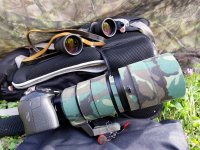
The color saturation of the Habicht is very much in line with reality. This Habicht has the highest color accuracy of the binoculars I've tested.
Two examples of chromatic behavior in different chromatic situations:
1- When I observe in the forest, where a single shade predominates, and the frame is characterized by a chromatic monotony, but also by many situations of high contrast, shadow/light transitions, these binoculars bring out the shaded areas brighter, the gray palette being richer, somehow highlighting the monotonous chromatic character of the image. In this situation, binoculars with a slight shift in color tint (yellowish/green like Victory SF 10x42 or red like Ultravid 8x20 and MHG 8x30) may appear more saturated and spectacular in color than Habicht, but not in accordance with the chromatic reality and with the multitude of shades!
2- But if there are spots of vivid and different colors in the visual field, Habicht renders these colors very vibrantly and accurately. When I saw at 200m a group of people dressed in strong and very different colored clothes, I was speechless by the beauty of the colors. The colors had that spectacular "pop out", but at the same time, preserving the naturalness and tonal balance between them. This is only achieved due to the very high but homogeneous percentage of light transmission along the entire curve of wavelengths!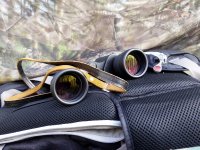
Also the well-defined Habicht FOV is a bonus and it's superb for the forest and I don't feel it small at all. Because I wear glasses, to gained eye relief I unscrewed the eyepiece cups and replaced them with rings cut out of the sponge (the folded cups still took 2 mm of eye relief)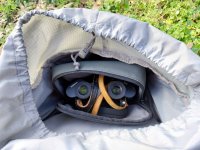
Returning to that day, after searching in the greatest possible silence (at every step I was careful not to crack a branch) I chose a place in an orchard with a symmetrical perspective! Here I installed my camouflage photo blind and sat in great silence waiting for the deer. Several days before, I observed the behavior and more frequent transit areas of the deer, so the ambush site was carefully chosen.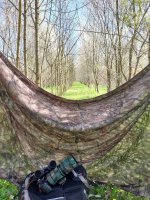
While I was quietly waiting for the deer, I noticed a lot of curious birds coming around me (great spotted woodpecker, chiffchaff, long tailed tit, great tit, common buzzard)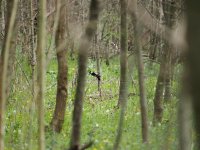
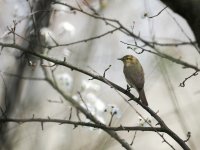
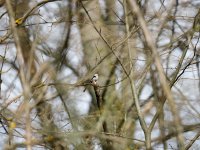
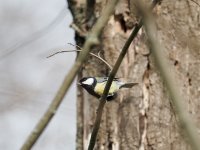
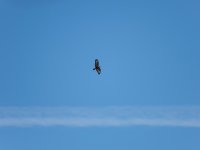
After about 2 hours of waiting, a young deer shyly appeared in the frame. This is the picture which I prepared several days in a row and I am very happy with it. It is exactly what I wanted! But not so much my patience and preparations were the most important in the making of this picture... but divine providence! Because this deer could not pass there at all! On top of that, as he passed by, he headed towards me. What were the chances of him staring straight into my lens? This fraction of a second is a divine gift!
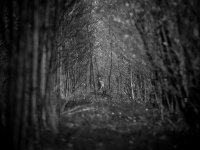

The color saturation of the Habicht is very much in line with reality. This Habicht has the highest color accuracy of the binoculars I've tested.
Two examples of chromatic behavior in different chromatic situations:
1- When I observe in the forest, where a single shade predominates, and the frame is characterized by a chromatic monotony, but also by many situations of high contrast, shadow/light transitions, these binoculars bring out the shaded areas brighter, the gray palette being richer, somehow highlighting the monotonous chromatic character of the image. In this situation, binoculars with a slight shift in color tint (yellowish/green like Victory SF 10x42 or red like Ultravid 8x20 and MHG 8x30) may appear more saturated and spectacular in color than Habicht, but not in accordance with the chromatic reality and with the multitude of shades!
2- But if there are spots of vivid and different colors in the visual field, Habicht renders these colors very vibrantly and accurately. When I saw at 200m a group of people dressed in strong and very different colored clothes, I was speechless by the beauty of the colors. The colors had that spectacular "pop out", but at the same time, preserving the naturalness and tonal balance between them. This is only achieved due to the very high but homogeneous percentage of light transmission along the entire curve of wavelengths!

Also the well-defined Habicht FOV is a bonus and it's superb for the forest and I don't feel it small at all. Because I wear glasses, to gained eye relief I unscrewed the eyepiece cups and replaced them with rings cut out of the sponge (the folded cups still took 2 mm of eye relief)

Returning to that day, after searching in the greatest possible silence (at every step I was careful not to crack a branch) I chose a place in an orchard with a symmetrical perspective! Here I installed my camouflage photo blind and sat in great silence waiting for the deer. Several days before, I observed the behavior and more frequent transit areas of the deer, so the ambush site was carefully chosen.

While I was quietly waiting for the deer, I noticed a lot of curious birds coming around me (great spotted woodpecker, chiffchaff, long tailed tit, great tit, common buzzard)





After about 2 hours of waiting, a young deer shyly appeared in the frame. This is the picture which I prepared several days in a row and I am very happy with it. It is exactly what I wanted! But not so much my patience and preparations were the most important in the making of this picture... but divine providence! Because this deer could not pass there at all! On top of that, as he passed by, he headed towards me. What were the chances of him staring straight into my lens? This fraction of a second is a divine gift!

Thotmosis
Well-known member

I returned to the same forest with the clear intention of photographing a deer. The binoculars chosen this time were the Habicht 7x42, because his porro 3d effect makes it easier to search among the thickets in the forest. View attachment 1568513
The color saturation of the Habicht is very much in line with reality. This Habicht has the highest color accuracy of the binoculars I've tested.
Two examples of chromatic behavior in different chromatic situations:
1- When I observe in the forest, where a single shade predominates, and the frame is characterized by a chromatic monotony, but also by many situations of high contrast, shadow/light transitions, these binoculars bring out the shaded areas brighter, the gray palette being richer, somehow highlighting the monotonous chromatic character of the image. In this situation, binoculars with a slight shift in color tint (yellowish/green like Victory SF 10x42 or red like Ultravid 8x20 and MHG 8x30) may appear more saturated and spectacular in color than Habicht, but not in accordance with the chromatic reality and with the multitude of shades!
2- But if there are spots of vivid and different colors in the visual field, Habicht renders these colors very vibrantly and accurately. When I saw at 200m a group of people dressed in strong and very different colored clothes, I was speechless by the beauty of the colors. The colors had that spectacular "pop out", but at the same time, preserving the naturalness and tonal balance between them. This is only achieved due to the very high but homogeneous percentage of light transmission along the entire curve of wavelengths! View attachment 1568515
Also the well-defined Habicht FOV is a bonus and it's superb for the forest and I don't feel it small at all. Because I wear glasses, to gained eye relief I unscrewed the eyepiece cups and replaced them with rings cut out of the sponge (the folded cups still took 2 mm of eye relief) View attachment 1568514
Returning to that day, after searching in the greatest possible silence (at every step I was careful not to crack a branch) I chose a place in an orchard with a symmetrical perspective! Here I installed my camouflage photo blind and sat in great silence waiting for the deer. Several days before, I observed the behavior and more frequent transit areas of the deer, so the ambush site was carefully chosen. View attachment 1568518
While I was quietly waiting for the deer, I noticed a lot of curious birds coming around me (great spotted woodpecker, chiffchaff, long tailed tit, great tit, common buzzard)View attachment 1568523View attachment 1568522View attachment 1568520
View attachment 1568521
View attachment 1568519
After about 2 hours of waiting, a young deer shyly appeared in the frame. This is the picture which I prepared several days in a row and I am very happy with it. It is exactly what I wanted! But not so much my patience and preparations were the most important in the making of this picture... but divine providence! Because this deer could not pass there at all! On top of that, as he passed by, he headed towards me. What were the chances of him staring straight into my lens? This fraction of a second is a divine gift!
View attachment 1568524
Beautiful 🤩
Similar threads
- Replies
- 42
- Views
- 4K
Users who are viewing this thread
Total: 3 (members: 0, guests: 3)





